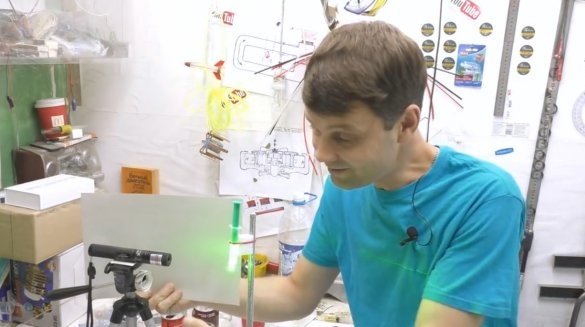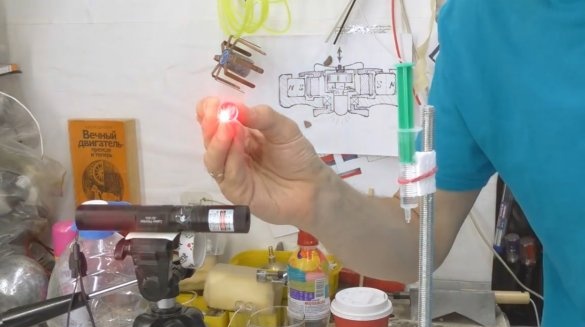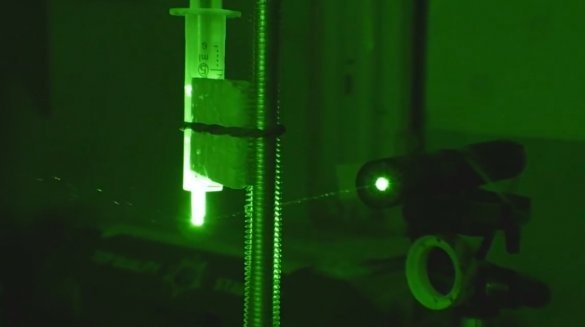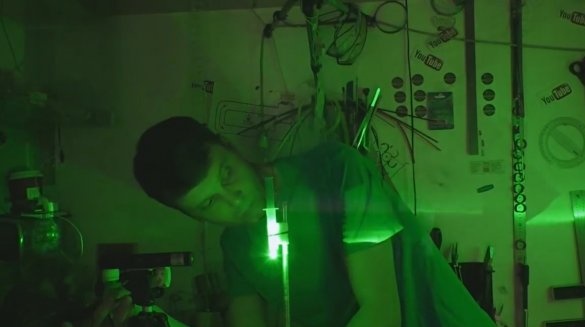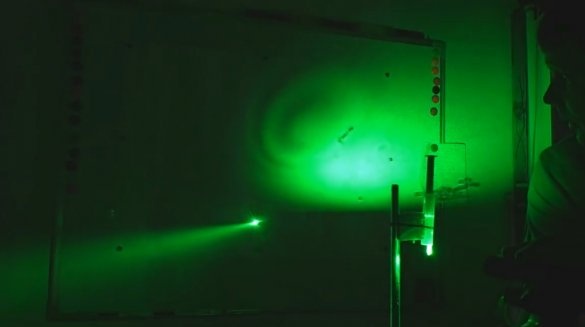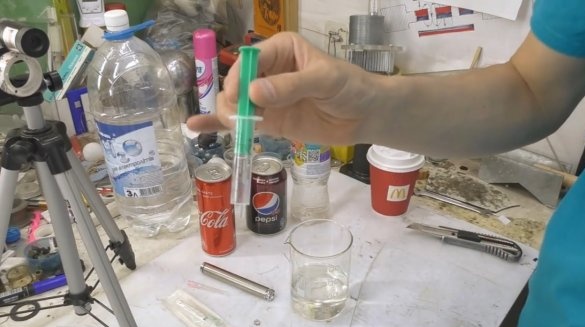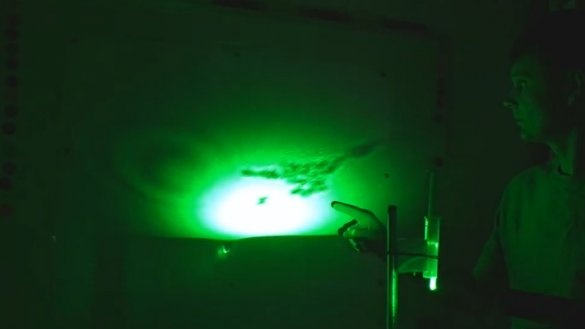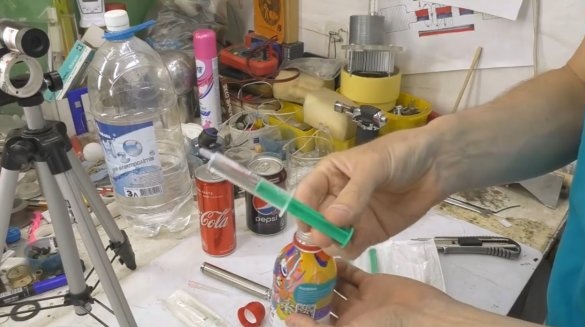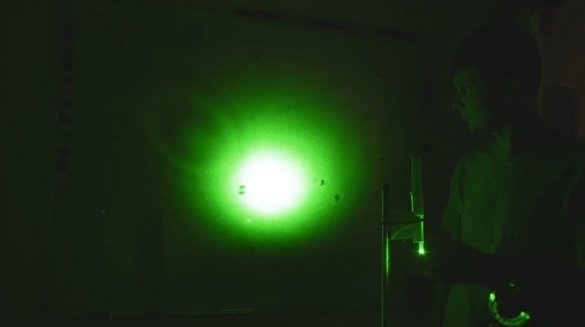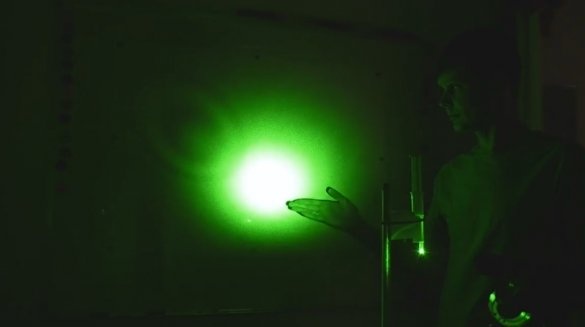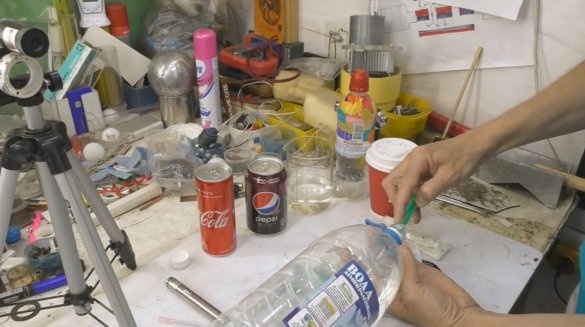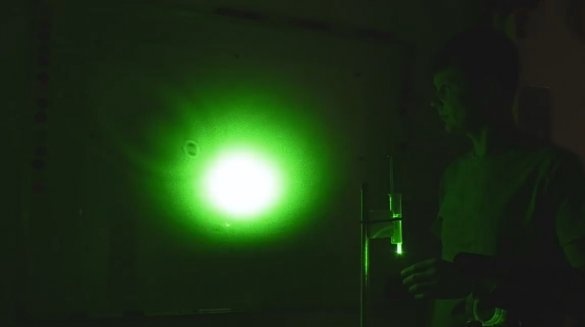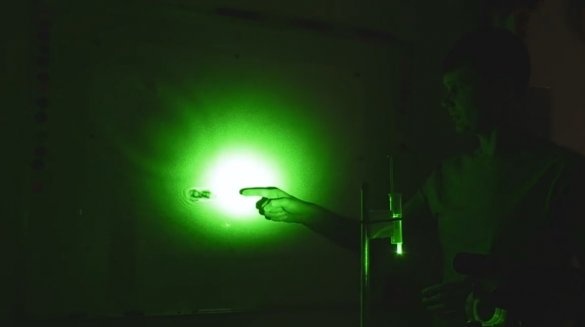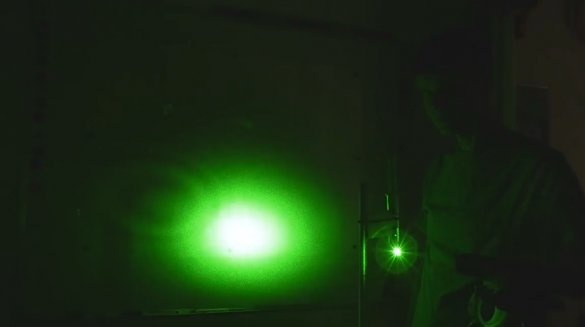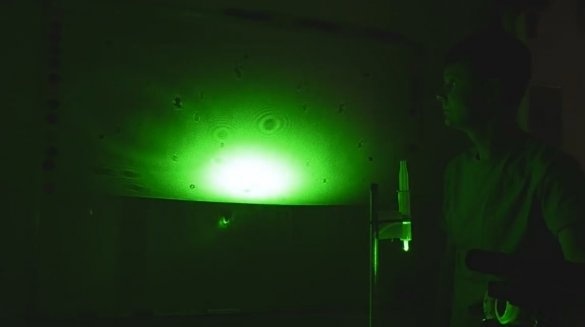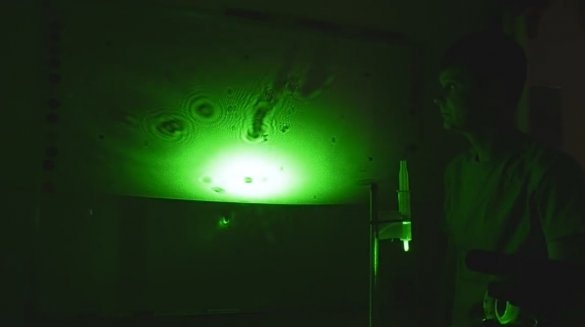Surely many of you sometimes use a microscope, or use macro photography.
In this article, Igor, the author of the YouTube channel of the same name Igor Beletsky, will show you an unusual experiment in converting a laser pointer into a projection microscope. With it, you can consider small particles in a drop of water or another clear liquid.
This experiment is very simple to implement, and will be interesting to students.
Use the eye when working with the laser!
Materials
- 5 ml syringe.
Instruments, used by the author.
—
—
- Tripod
- Projection screen.
Manufacturing process.
So, the laser pointer is the basis for this microscope. Even a low-power, red color will do, but the brighter the beam - the larger the picture will be able to get. Igor will use green.
For the purity of the experiments you need to use sterile disposable syringes.
Now you need to assemble a simple design. Attach a laser pointer and syringe with a sample to independent tripods. To achieve the formation of a spherical drop on the nose of the syringe. Then aim the laser beam exactly in the center of the drop.
The beam passing through the drop should fall on a white screen, a sheet, or just a plain wall.
By carefully adjusting the direction of the beam, you need to achieve a round spot on the screen.
Igor’s first test sample will be ordinary tap water. On the screen, you can observe the movement of various particles inside the liquid. To change the picture, a slight movement of air near the drop itself is enough to slightly change the position of the particles. In general, it can be seen that quite a lot of things float in tap water.
Now the author will examine the purchased bottled drinking water without gas. It has very few "extra" particles, or even a clean screen.
Next, he wants to test the distilled water from the car shop. Here it contains small particles.
But what about Coca-Cola? There is simply no one in it and no particles.Probably everything was dissolved in phosphoric acid.
And the last interesting point is sunflower oil. There are a lot of particles, but they hardly move due to the high viscosity of the oil.
Thanks to Igor for a simple but very interesting experiment that anyone can repeat!
All good mood, good luck, and interesting ideas!
Author video can be found here.


